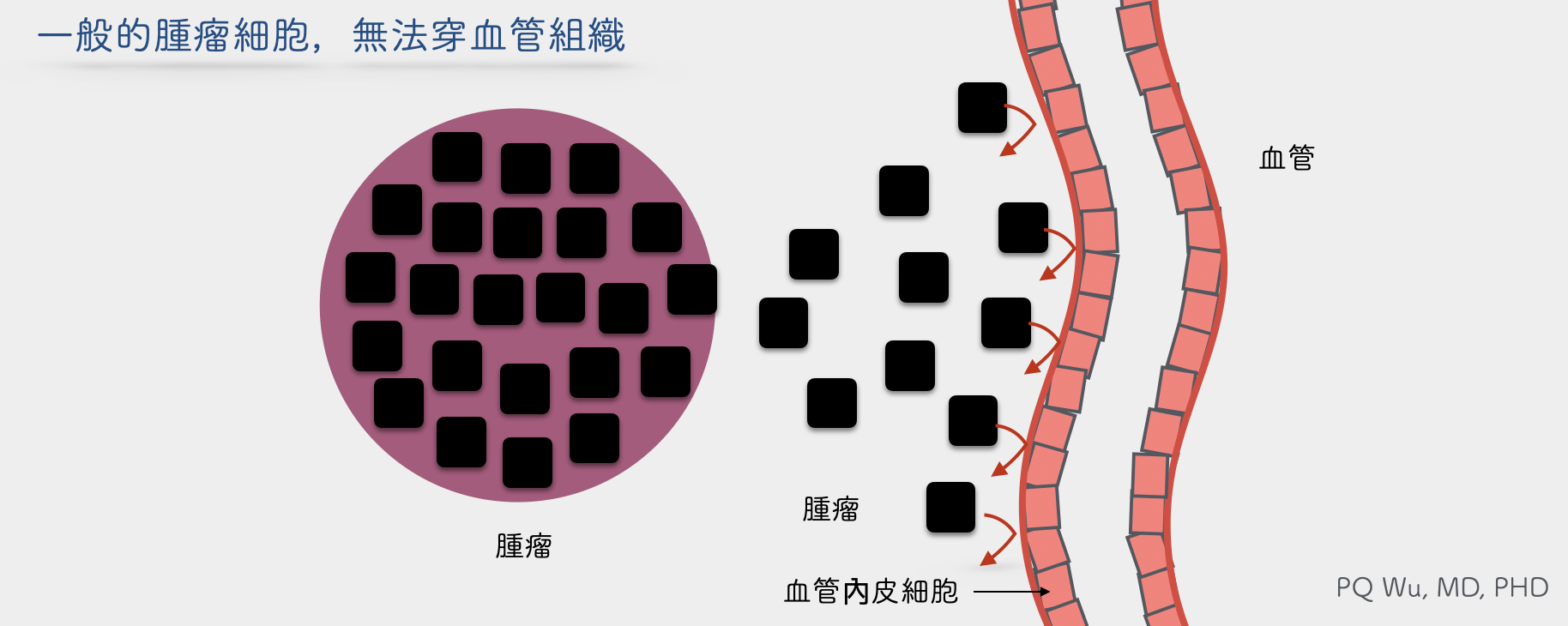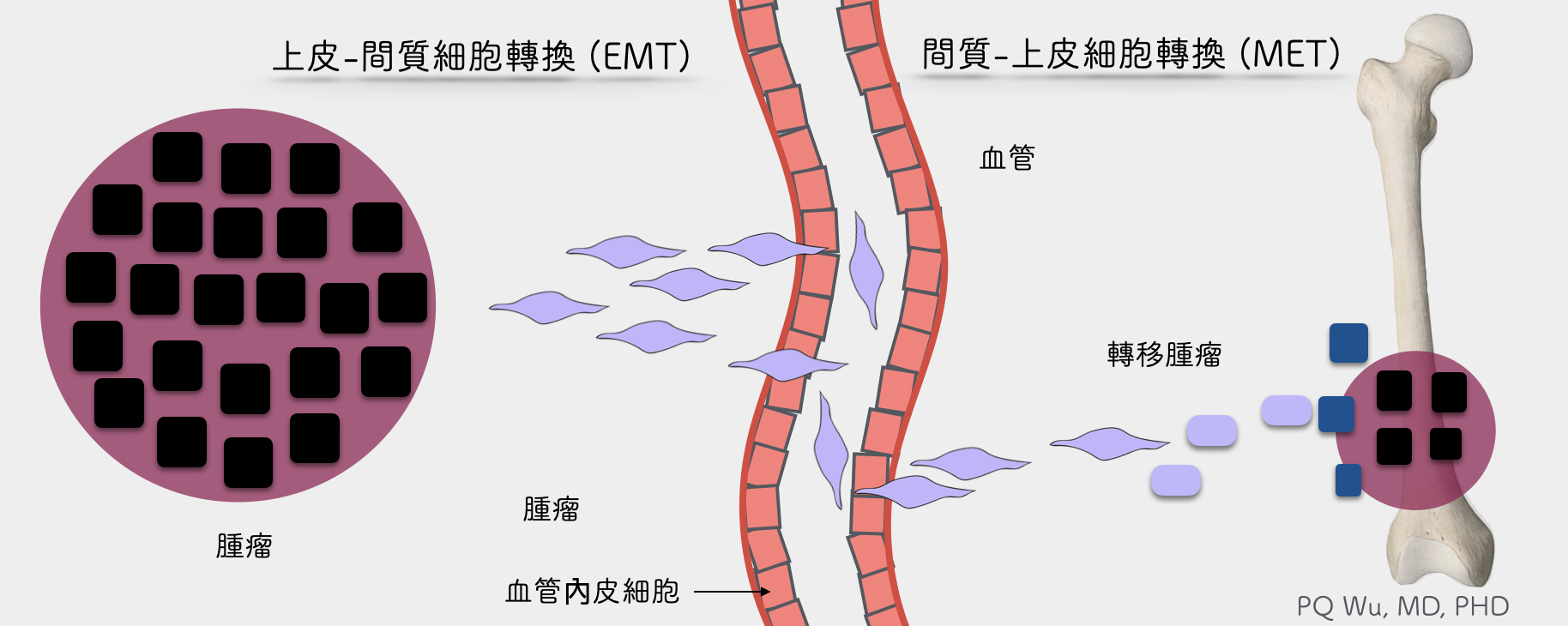Bone metastasis of cancer refers to cancer cells of a variety of primary tumors, including breast cancer, lung cancer, prostate cancer, etc., trespass from the primary occurring site through the blood or lymphatic system to bone tissue and began to grow.
by PQ Wu

he word "Metastasis" was first proposed in 1829 by Joseph Récamier, an obstetrician and gynecologist in Paris. He called the phenomena metastasis when he found cancer invaded the blood vessel and even attacked the brain in a breast cancer patient. Metastasis is Latin and means "change in the seat of a disease", or “a disease that changes location”.
In 1889, Stephen Paget, a British surgeon, published a very famous article in the medical journal- Lancet. He conducted an autopsy study of 735 breast cancer patients and found that 33% of them had combined liver metastasis, 10 % combined lung metastasis, and 2% combined spleen metastasis. At the same time, he found that the femur, tibia, and skull have much more chances of metastasis than fingers, toes, and other distal bones in terms of bones. So, he thought that the tumor would transfer to particular tissues or specific locations of the bones. Instead of 'random or diffusive' movement, the tumors would be attracted by the transferred tissues or special characteristics at the transferred locations. Therefore, he published the famous 'Seed and Soil' Theory ."
He believes that the same as seeds scattering in the soil by the wind, the seeds do not grow everywhere. Instead, they will germinate in suitable soil! This theory is different from the Stochastic Theory proposed by Dr. Ewing. In today's medical perspectives, both theories are right and exist!
Later, scientists began to do many related studies based on the Seed and Soil Theory. The current theory is that when a seed (transferred tumor) wants to grow on soil (an organ that tumor transfer), three conditions are required:
First. Adhesion. Metastatic tumor cells require fairly good trafficking to attach to the metastasized organs. In general, it means that the transferred organs need a good blood supply, such as the liver and bone marrow.
Second. Chemotaxis. Metastatic tumor cells and metastasized organs have special proteins to attract each other.
Third. Local Growth. Transferred organs have certain growth factors, or tumor cells secrete special growth factors to foster tumor cell growth.
Not all tumor cells would metastasize. Tumor cells need to have many abilities to metastasize distally:
First, change the adhesion between the surrounding normal cells. Normal peripheral cells surround the tumor as a wall, and the tumor cells that can metastasize can destroy the structure of the wall and break into the blood or lymphatic tract, causing metastasis.
Second, tumor cells can do Epithelial-Mesenchymal Transition, EMT. General cancer cells (carcinoma) are 'epithelial cells (Black cells in the figure below)' with no deformity or penetration ability. Therefore, cancer cells must be able to self-convert into 'mesenchymal cells (Purple cells in the figure below)’ to deform and penetrate vascular tissue.

The general tumor cells don’t have EMT capability, so they can not cross and can not incur metastasis when encountering blood vessels.

When cancer cells have EMT capability, they can pass through the walls of blood vessels, enter blood vessels, and metastasize.
Third, induce angiogenesis. Tumor cells must induce peripheral angiogenesis and strive for more metastasis opportunities.
Fourth, resist the human body's self-defense capabilities.
Fifth, they have colonization capability so that they can continue growing in other organizations.

The mechanism of tumor metastasis is quite complex, and we can only tell briefly! At present, many scientists are actively studying how to suppress various mechanisms. We hope that one day in the future, we will avoid the regret of tumor metastasis!


